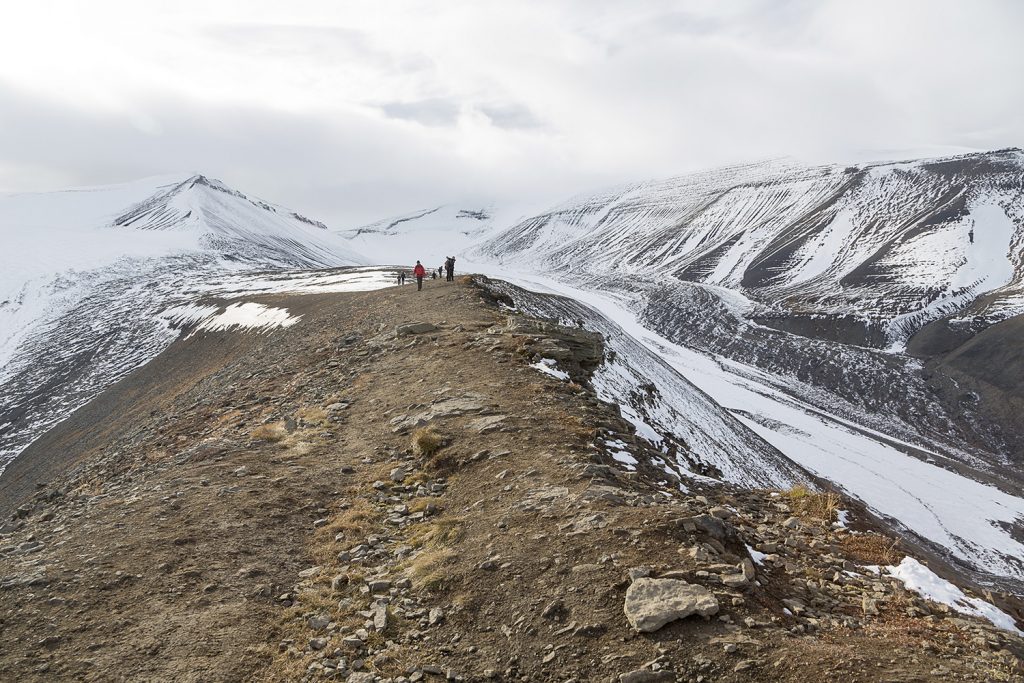Active rock glaciers depend on permafrost. In Spitsbergen, almost all of the unglaciated land surface is permanently frozen except the uppermost active layer that is thawing during each summer. The thickness of the active layer depends on the substrate, exposition, moisture, vegetation cover and to a significant degree on the thickness and duration of the winter snow cover. Generally speaking, the thickness of the active layer has increased in recent years due to a warming climate, and the temperature of the underlying permafrost has increased.
A deep and long-lasting snow cover can protect the ground effectively from the severe cold of the winter, whereas the surface is exposed wherever the snow is being blown away by wind. As a result, greatest permafrost thicknesses have been found on exposed mountain plateaus and ridges such as Sarkofagen, where ground is permanently frozen down to depths of 450 metres under the surface.
In valleys, where the snow cover can last and which may still have been flooded by the sea in the early Holocene before post-glacial land uplift was completed, the permafrost layer may be near 100 metres „thin“.

Sarkofagen, Svalbard, Norway
